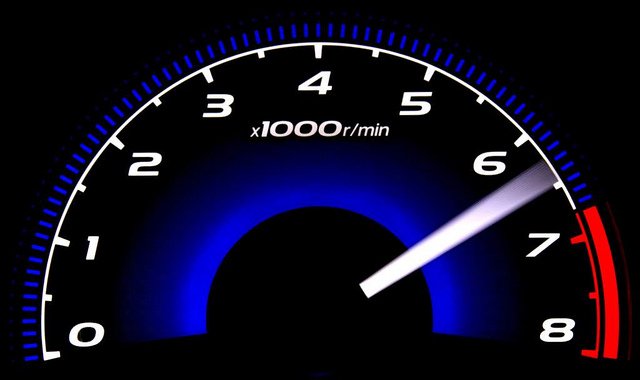Of all the systems in the typical automobile, the transmission is probably the most mysterious. After all, the transmission does not provide power to the vehicle, ensure the parts work well or translate the chemical explosions into mechanical energy. The transmission’s job is to translate the engine’s narrow range of power into a wide range of vehicle speeds. Because of the importance of this part of your car’s system and the complexity and cost to fix it, it’s best to avoid transmission repair if possible.
How an Engine Would Work Without a Transmission
A vehicle powered by an internal combustion engine basically operates by producing hundreds of small-scale explosions that force air to expand inside cylinders, pushing pistons up and down and turning a crankshaft that, without a transmission, turns the wheel axles and the wheels. The engine operates at a limited range of speeds depending on how fast those explosions occur, a process regulated by a driver depressing or letting off the accelerator.
Without a transmission, the vehicle would have one gear ratio. To understand it simplistically, think of a bicycle chain and gears. If there were only one gear ratio, say middle gear, it would be a strain on the rider to get the bicycle rolling from a dead stop. Likewise, the gearing would be too low for high-speed riding, requiring frantic pedaling to provide any power to the bicycle. Single speed bicycles have always existed, but no one on the Tour de France is riding one.
With just one gear ratio, an automobile would have a similar problem. At middle gear, an automobile would stall out constantly from a starting position. Traveling at high speed—even 60 or 70 mph—in a middle gear would require the engine to work way too hard and overheat, causing permanent damage before long. An engine running at full speed in a lower gear would literally self-destruct.
It is easy to test this in a manual transmission vehicle: put the car or truck in third gear and attempt to start from a standing position. The vehicle will stall out repeatedly. Next, drive normally until reaching a cruising speed and then downshift into third. The vehicle will scream bloody murder and might even begin rattling uncontrollably.
Don’t try this experiment for long.
Clearly, one gear ratio would not work very well. Enter the transmission, which regulates the amount of power produced by the engine’s combustion that will be used to turn the wheels. The transmission uses the engine’s torque effectively, improves gas mileage and protects the engine from wearing out.
The Difference Between Manual and Automatic Transmissions
The first automobiles all required the driver to change gears manually by stepping on a clutch to disengage them and using a shifter to switch from one gear to another. This basic process is still in use today on a dwindling number of vehicles.
Much more common today is the automatic transmission, which uses sensors to determine when to shift, a torque converter instead of a clutch to disconnect the engine power from the gears, and a complex system of planetary gears to regulate the power and rotational speed communicated to the wheels. If you listen carefully when the vehicle is operating, you can hear the automatic transmission rev up or down before changing gears.
Critical to any transmission system is transmission fluid, which lubricates the moving parts of the transmission and serves as a coolant. In a manual transmission, the many moving parts produce tremendous friction and heat. Viscous transmission fluid prevents corrosion and wear, keeps parts lubricated and prevents overheating.
In an automatic transmission, lubricating and cooling are the secondary purpose of transmission fluid. Its main purpose is to facilitate the work of the transmission itself. The transmission fluid provides hydraulic pressure to turn the gears that deliver mechanical power to the wheels. More than half of the issues related to an automatic transmission can be traced in one way or another to the transmission fluid.
How to Avoid Transmission Repair
An ounce of prevention is worth a pound of cure in automobiles just as it is in other aspects of life.
Check fluid levels. The most important act of prevention is maintaining the transmission fluid. Checking the fluid levels periodically is as simple as checking oil levels. Transmission fluid is easy to find and the dipstick is read the same way as with oil. It should be red and smell sweet, and the fluid level should reach the full line. If it smells like rotting fish, it needs to be flushed and the transmission should be checked by a transmission shop.
If levels are low, there could be a leak somewhere in the system. To save $3000 or $4000 for a new transmission, invest $12.95 in a sealant like BlueDevil Transmission Sealer, which restores seals and gaskets to their original condition and stops leaks fast.
Using BlueDevil Transmission Sealer is easy and it works with all kinds of transmission fluid. Turn off the engine and pour the sealant into the transmission fluid—one ounce of sealant for each gallon of fluid. It begins circulating as soon as the vehicle begins running and takes up to two days to seal leaks. Be careful not to overfill the fluid receptacle.
Flush the fluid. Changing transmission fluid in intervals outlined by the owner’s manual keeps harmful corrosives and particles from building up in the system. Many manufacturers recommend flushing the transmission every 100,000 miles. A transmission fluid change costs $100 – $300 and can save thousands in repairs.
Avoid changing gears while moving. In an automatic transmission, switching between reverse and drive while the car is moving, or between a higher lower gear, puts strain on the transmission. Coming to a stop before changing gears will add miles to the life of the transmission.
Keep the tires in good shape. Definitely don’t drive on a spare tire or donut any longer than necessary. Driving on mismatched tires puts a strain on the transmission.
Inspect your transmission regularly. A quick inventory of fluid and moving parts can diagnose a problem before it does damage. As with all parts of an automobile, it is a good idea to inspect the transmission, or have a car care professional do so, periodically.
When to Repair the Transmission
Eventually, every transmission will need to be repaired, rebuilt or replaced. It is a mechanical part that moves and spins constantly, mile after mile, generating heat and friction, soothed by fluid that can leak or become dirty, introducing harmful particles to the transmission parts.
The first indication that the transmission needs to be serviced is auditory. It begins making unusual noises like buzzing, clunking or whining. If the vehicle rattles when in neutral, it should be checked. The transmission is not the only possible culprit, but it is an important one.
A problem with the transmission fluid is the primary cause or indicator of transmission issues. Red fluid dripping beneath the middle of the vehicle is an indication that the fluid is leaking. Caught early, this can be fixed easily before any damage is done. Allowing it to continue long enough could cause the transmission to seize up and require replacement.
Transmission fluid can cause or indicate transmission problems even if it is not leaking. Fluid that appears cloudy or burnt is no longer lubricating the various parts of the transmission. It must be serviced immediately. The same is true if the fluid emits a burnt odor.
Difficulty shifting gears with a manual transmission can be a sign of a transmission issu. Problems can include jerking or hesitation when shifting gears, difficulty getting into gear, slipping out of gear without reason, and shifting gears without driver prompting. These are all direct indications of a failing transmission that require immediate attention.
Problems depressing the clutch or disengaging the gears when the clutch is depressed in a manual transmission vehicle are less common signs of transmission issues. They also require evaluation by a qualified transmission specialist.
The Cost of Transmission Repair
Repairing, replacing or rebuilding a transmission is almost never a job for a DIYer. Automatic transmissions are complex systems of planetary, sun and ring gears, a torque converter, a load sensor, clutch and bands, and more, which all must fit together seamlessly. If changing the transmission fluid or using a sealer doesn’t fix the problem, taking it to a transmission shop is the best, though more expensive, option.
How much does transmission repair or transmission rebuild cost?
Replacing the transmission starts at $4,000 and can run as high as $8,000. A transmission rebuild costs, on average, $2,800-$3,800. Many car care professionals recommend a used or remanufactured transmission because they come with warranties and require less labor at the shop.
Because major damage to the transmission can result in an expensive bill, knowing how to avoid transmission repair is your best option.
BlueDevil Products can be found at AutoZone, Advance Auto Parts, O’Reilly Auto Parts, NAPA, Parts Authority, and other major auto parts retailers.
BlueDevil Products can be found on Amazon.com or at AutoZone, Advance Auto Parts, O’Reilly Auto Parts, NAPA, and other major auto parts retailers.
Related Articles



